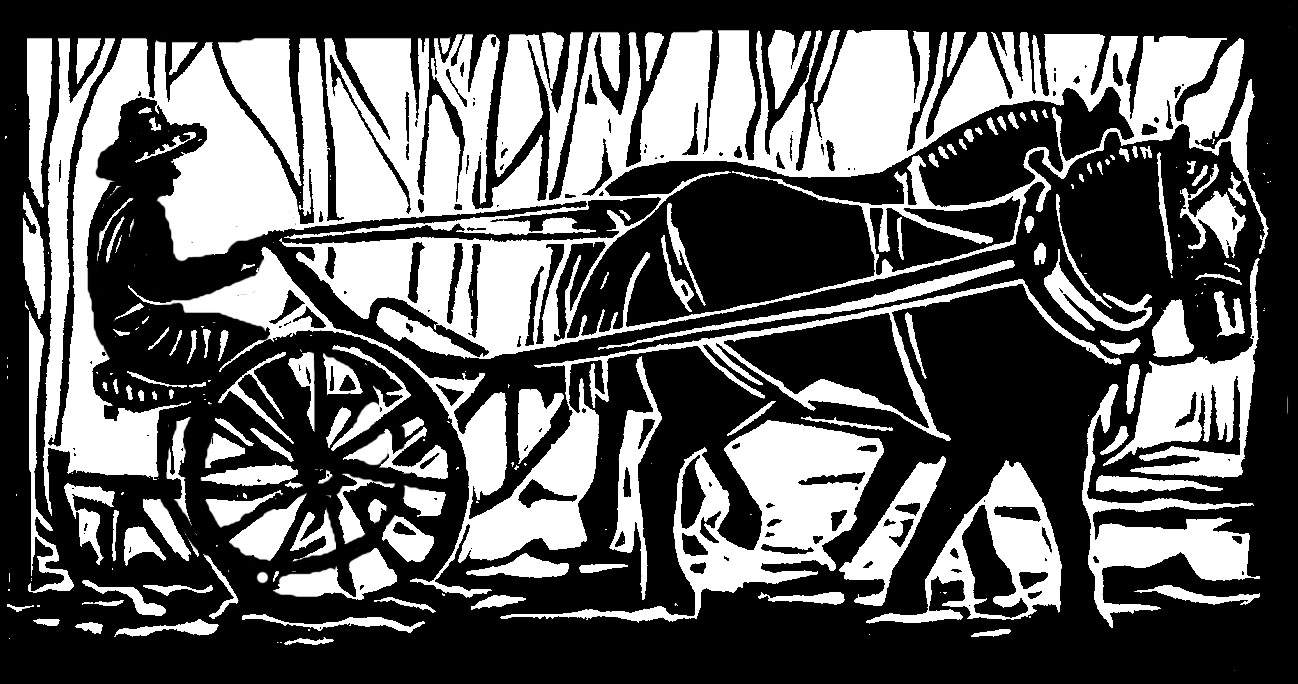Our new team of horses was going to be haying with us for the first time, and I was nervous.
On mowing day, Willow and Fern were not daunted by the strange clackety-clack of the sickle bar mower. The next day, they weren't bothered by the whir-whir of the tedder. The third day, there was no problem with the quiet rake.
But the next step was the big one: introducing the hayloader. If draft horses are going to be afraid of farm machinery, it's often the hayloader that worries them. It's a big noise coming from behind, high up, and some horses do not like that at all, which is why I was nervous.
After the raking, the horses rested in the barn with hay and water, while the farmers got the barn ready.
Ideally, this would have been done well ahead of time, but every year, it gets done the hour before the first load of hay comes in. Or, rather, the hours. We had to move out the two hayloaders, the spreader, the tools, the piles of junk accumulated over the winter. We had to move a million greenhouse tables that had been set outside in the way.
I got more and more nervous as the hours ticked by. I wanted to get the first haying over with, so I could quit imagining disasters.
Luckily our daughter was home, with a visiting friend, who wanted to help hay. The vigor of two twenty-five-year-olds got us through the hours of junk and table moving. Plus I couldn't let my nervousness turn to outright grumpiness when we had a guest. So when my fellow remembered he had to put a new pole on the hay wagon, and we needed to cart a lot of musty old hay from the barn to the compost pile, I had to grin and bear it. Or just bear it.
Finally we were ready for the big moment. I worked hard to imagine everything going smoothly instead of runaways and smash-ups and horses getting hurt and farmers getting hurt and daughters getting hurt and guests getting hurt.
First we hitched the horses to the wagon and hayloader in the driveway, and my thankfully calm, confident fellow asked the team to walk just a few steps, with the hayloader out of gear, to minimize the noise. Willow and Fern flicked their ears back, listening, but weren't alarmed.
Then came the pull up the hill, including the top of the hayloader catching on branches, and the rattle and bang over rocks in the lane. I walked briskly ahead, with a pounding heart, in case I had to try and stop stampeding horses. At least it is a steep hill, so the horses would have to work hard to run away pulling the haywagon and hayloader.
But Willow and Fern weren't even considering running away.
In the field was the last test: putting the hayloader into gear, which made more strange new noises. Willow and Fern didn't blink an eye. Then the full glory of this new team of horses was revealed. Tried and true, slow and steady, their classic funeral pace proved to be a blissful match for hayloader work.
My fellow farmer, our daughter, and this nervous farmer were all exulting. How easy! How fun! How downright relaxing to make hay with these fine and slow horses!
Our guest seemed surprised by the nervousness/borderline grumpiness turned to glee. “I guess I came on a good day to hay,” she said.
“You sure did,” we burbled. “No smash-ups, no break-downs, no runaways, not even a person falling down over and over trying to load the hay while the wagon jerks and jolts and bounces behind a trotting horse!”
“Wow,” said our sweaty, chaff-covered, worn-out guest, who was probably glad we hadn't mentioned such possibilities earlier.
“Yes!” we said. “This is heavenly haymaking! Lo, the hay angels are singing!” (Well, we didn't really say that last bit, because we didn't want our guest to think we were entirely wacky.)
Originally published in the Monadnock Shopper News, Aug 20 - Aug 26, 2025
